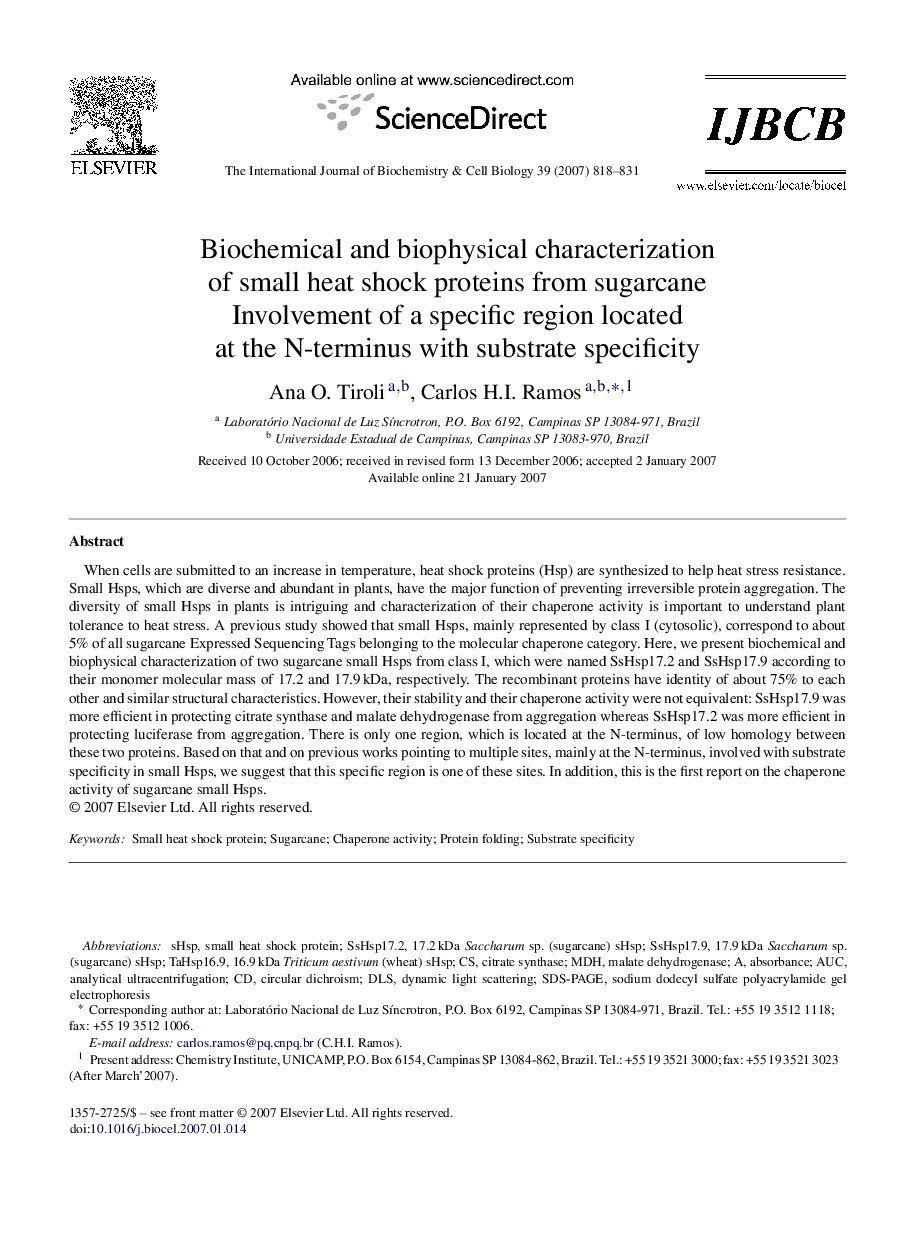| Article ID | Journal | Published Year | Pages | File Type |
|---|---|---|---|---|
| 8326500 | The International Journal of Biochemistry & Cell Biology | 2007 | 14 Pages |
Abstract
When cells are submitted to an increase in temperature, heat shock proteins (Hsp) are synthesized to help heat stress resistance. Small Hsps, which are diverse and abundant in plants, have the major function of preventing irreversible protein aggregation. The diversity of small Hsps in plants is intriguing and characterization of their chaperone activity is important to understand plant tolerance to heat stress. A previous study showed that small Hsps, mainly represented by class I (cytosolic), correspond to about 5% of all sugarcane Expressed Sequencing Tags belonging to the molecular chaperone category. Here, we present biochemical and biophysical characterization of two sugarcane small Hsps from class I, which were named SsHsp17.2 and SsHsp17.9 according to their monomer molecular mass of 17.2 and 17.9Â kDa, respectively. The recombinant proteins have identity of about 75% to each other and similar structural characteristics. However, their stability and their chaperone activity were not equivalent: SsHsp17.9 was more efficient in protecting citrate synthase and malate dehydrogenase from aggregation whereas SsHsp17.2 was more efficient in protecting luciferase from aggregation. There is only one region, which is located at the N-terminus, of low homology between these two proteins. Based on that and on previous works pointing to multiple sites, mainly at the N-terminus, involved with substrate specificity in small Hsps, we suggest that this specific region is one of these sites. In addition, this is the first report on the chaperone activity of sugarcane small Hsps.
Keywords
Related Topics
Life Sciences
Biochemistry, Genetics and Molecular Biology
Biochemistry
Authors
Ana O. Tiroli, Carlos H.I. Ramos,
